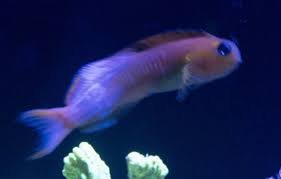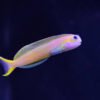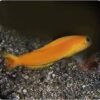Dragons and Their Influence on Traditional Chinese Clothing

In Chinese culture, the dragon is not only a powerful and revered mythical creature but also a central symbol deeply ingrained in the aesthetic and cultural expressions of the country. Throughout history, dragons have made their mark on various aspects of Chinese life, including art, architecture, and religion. One of the most notable areas where the dragon’s influence is profound is in the realm of traditional Chinese clothing. From imperial robes to festive garments, the dragon has been woven into the fabric of China’s sartorial history, symbolizing power, elegance, and good fortune. This article delves into the dragon’s impact on Chinese traditional clothing, exploring how the iconic creature has been represented in fabrics, designs, and the cultural significance tied to garments adorned with dragon motifs.
The Dragon as a Symbol in Chinese Culture
Before exploring its influence on traditional clothing, it is essential to understand the cultural significance of the dragon in Chinese society. In Chinese mythology, the dragon is a symbol of strength, wisdom, and prosperity. Unlike the fearsome dragons found in Western cultures, the Chinese dragon is a benevolent and auspicious creature. It is often seen as a protector and a bringer of good fortune, harmony, and vitality. The dragon embodies the powerful forces of nature, such as water, wind, and thunder, and is believed to have control over the elements. Because of its association with the emperor and the concept of divine rule, the dragon also represents imperial authority, making it a symbol of the highest status.
In traditional Chinese philosophy, the dragon is often linked with the Yang principle, representing energy, vitality, and masculinity. This makes it an especially important symbol in the world of Chinese attire, where clothing often reflects the wearer’s status, identity, and alignment with cosmic forces. The dragon, with its commanding presence and symbolic associations, naturally became a central motif in the clothing worn by the elite, including emperors, officials, and warriors, symbolizing their connection to higher powers and their role in maintaining balance and harmony within the empire.
The Dragon in Imperial Clothing: A Symbol of Power and Authority
One of the most prominent places where the dragon can be seen in traditional Chinese clothing is in the attire worn by the imperial family and high-ranking officials. Imperial robes, especially those worn by emperors, were heavily adorned with dragon imagery. The dragon was not just a decorative element but a representation of the emperor’s divine right to rule. The famous dragon robes, or longpao (龙袍), were intricately designed with dragons and other auspicious symbols, signifying the emperor’s supreme status and authority.
The dragon robe typically featured a single dragon in its design, surrounded by clouds, waves, and other elements symbolizing the emperor’s control over nature and the heavens. The design of the robe was not only a display of imperial power but also a reflection of the cosmological order. The dragon was often depicted with five claws, a characteristic that distinguished the emperor’s robe from those of lower officials, who were only permitted to wear garments featuring dragons with fewer claws. This specific detail was crucial in emphasizing the emperor’s unique status as the son of heaven and the ruler of the Earth.
Material and Colors:
The fabrics used for the emperor’s dragon robes were luxurious, often made of silk, brocade, and satin, all chosen to reflect the wearer’s supreme status. These garments were often embroidered with intricate dragon patterns, usually in golden or yellow thread, as yellow was considered the emperor’s exclusive color. The presence of the dragon in these garments also symbolized the emperor’s connection to the heavens and his ability to maintain harmony between heaven and earth.
Embroidered Dragons:
Dragon embroidery, a revered art form in China, played a significant role in the making of these robes. Highly skilled artisans would create elaborate dragon designs, which would be stitched into the fabric using golden thread, silk, or other precious materials. The level of detail in these embroidery pieces was unmatched, showcasing not only the craftsmanship of the artisans but also the symbolic importance of the dragon.
Dragons in Traditional Garments for the Elite and Commoners
While the dragon was most commonly associated with the emperor, the influence of this magnificent creature extended beyond the imperial family and into the clothing of the elite and even the common people. The use of dragon motifs was often seen in garments worn by high-ranking officials, scholars, and military figures.
Mandarin Jackets and Dragon Designs:
Mandarin jackets, or changshan (长衫), a traditional Chinese garment, were often adorned with dragon imagery, especially for those in positions of power. These jackets, which were typically worn by men, featured embroidered dragons on the chest or sleeves, symbolizing strength and protection. The dragon embroidery was often coupled with other symbols like phoenixes, clouds, and other auspicious motifs, creating a harmonious and majestic design.
The presence of the dragon on such clothing was not only a display of wealth and social status but also a form of symbolic protection. People believed that wearing dragon-emblazoned clothing would invoke the dragon’s protective powers, guarding them from harm and bringing prosperity.
Dragon Patterns in Everyday Clothing:
Although the dragon motif was most common in royal and official attire, it also found its way into the everyday clothing of the people. In ancient China, during the Ming and Qing dynasties, wealthy individuals and merchants often wore garments decorated with dragon symbols to signal their elevated social status. These garments, made from high-quality fabrics like silk, would feature embroidered dragons or dragon-patterned brocade.
For the common folk, the dragon motif was often used during special occasions, such as festivals, weddings, and celebrations. The dragon, as a symbol of good fortune, was believed to bring blessings during important milestones in life.
The Dragon in Festive and Ceremonial Clothing
The dragon’s influence also extended to ceremonial and festive clothing, worn during significant cultural events and festivals. During major holidays like the Chinese New Year and Dragon Boat Festival, the dragon symbol appeared in various forms of clothing, from embroidered jackets to festival costumes.
Chinese New Year and Dragon Motifs:
During Chinese New Year, many people wear new clothes as a way of symbolizing a fresh start and to bring good fortune for the coming year. The dragon, as a powerful symbol of good luck and prosperity, is commonly featured in clothing worn during these celebrations. Embroidered dragon patterns, often paired with auspicious colors like red and gold, are thought to bring happiness, health, and wealth to the wearer. In addition to clothing, dragon-shaped accessories, such as jewelry and hairpieces, are also worn as part of festive attire.
Dragon Boat Festival:
The Dragon Boat Festival, celebrated on the fifth day of the fifth lunar month, honors the legendary poet Qu Yuan. During this festival, dragon motifs are commonly seen in the clothing worn by participants in dragon boat races. Traditional costumes worn by dragon boat racers and dancers often incorporate dragon patterns and symbols, paying homage to the spirit of the dragon and its association with the race. The dragon boat itself is also a crucial element of the celebration, further highlighting the significance of the dragon in both clothing and cultural practices.
Modern Interpretations of the Dragon in Fashion
While traditional Chinese clothing has evolved over the centuries, the dragon continues to play an influential role in modern Chinese fashion. Contemporary Chinese designers often incorporate dragon motifs into their collections, blending traditional symbolism with modern aesthetics. The dragon is featured in everything from haute couture collections to casual streetwear, where it serves as a nod to Chinese heritage while simultaneously embracing modernity.
Designers use dragon embroidery or prints in clothing, such as jackets, dresses, and accessories, to create a fusion of the old and new. This modern reinterpretation allows the dragon to retain its traditional meaning while making it relevant to contemporary tastes.
Conclusion: The Enduring Influence of the Dragon in Traditional Chinese Clothing
The dragon’s presence in traditional Chinese clothing is a testament to its enduring symbolic power and cultural significance. Whether embodied in the robes of emperors, the festive attire of common people, or the ceremonial garments worn during important cultural events, the dragon continues to represent strength, power, good fortune, and divine protection. Its role in Chinese clothing not only reflects the wearer’s social status but also aligns them with cosmic forces, affirming their place in the larger order of the universe.
From the elaborate imperial dragon robes of ancient China to the modern-day interpretations of dragon motifs in fashion, the dragon’s influence in Chinese clothing remains deeply rooted in tradition and continues to evolve in the modern era. As a symbol of vitality, prosperity, and protection, the dragon continues to shape the aesthetic and spiritual identity of Chinese culture, both in clothing and beyond.


